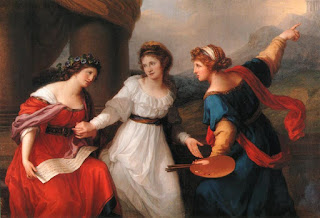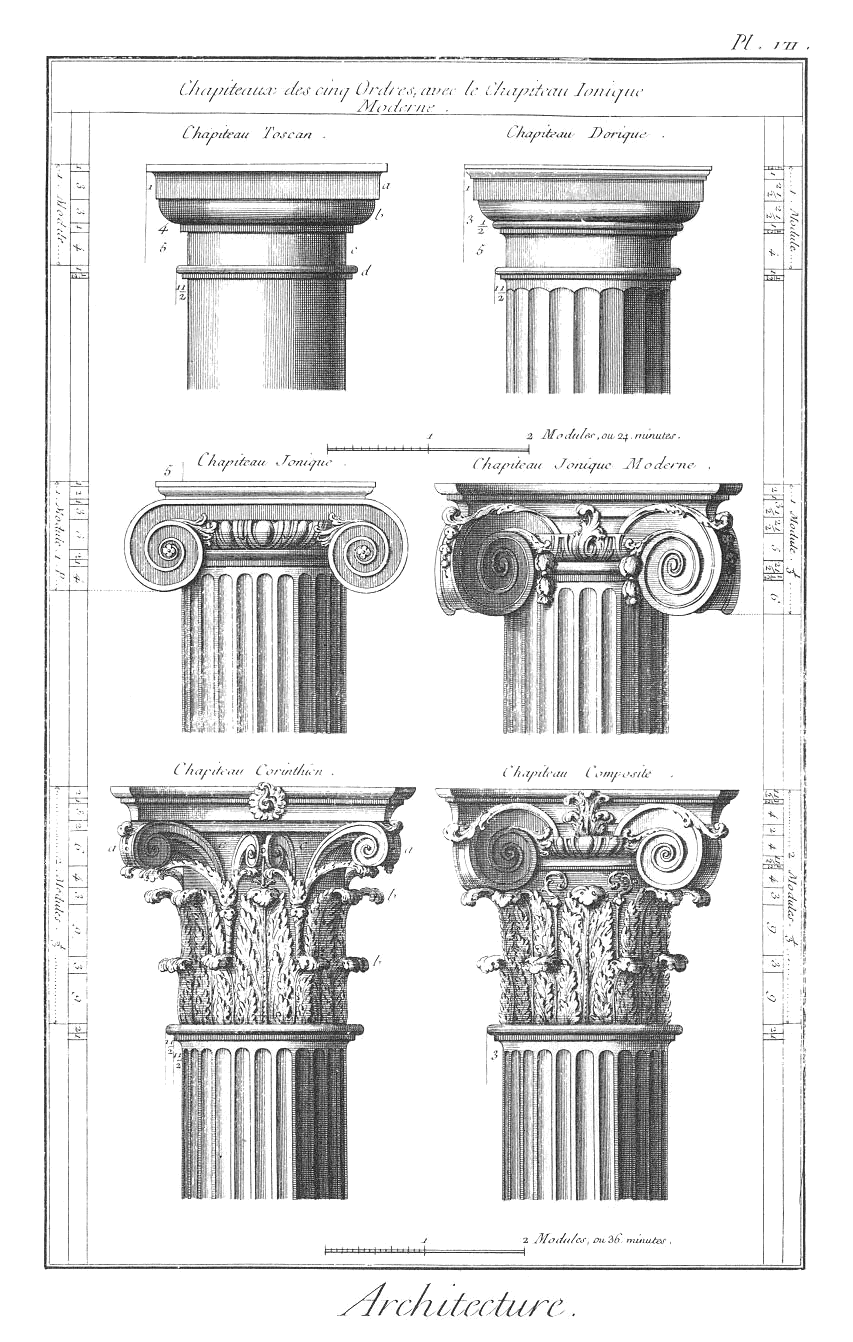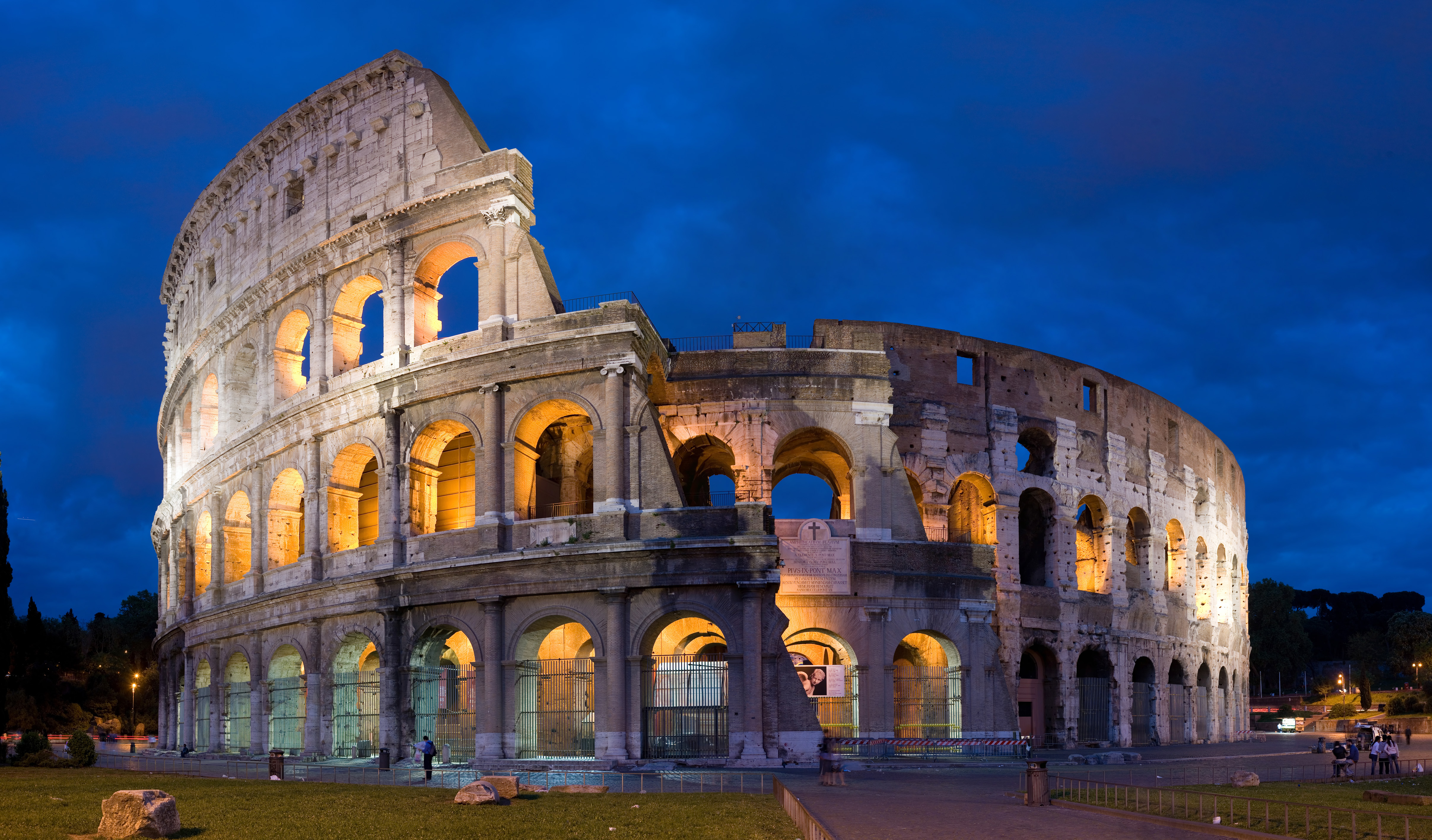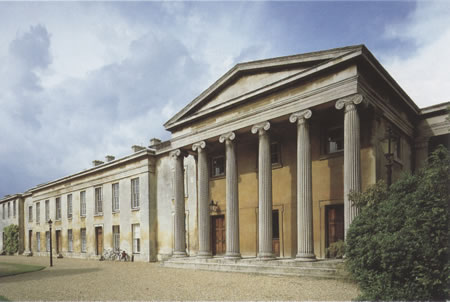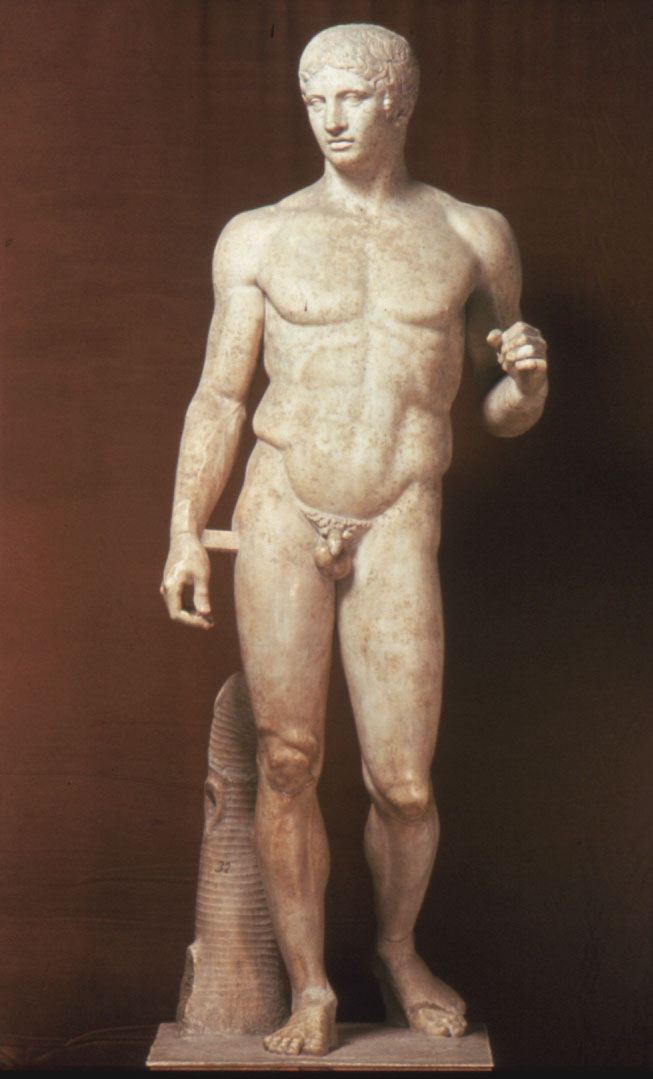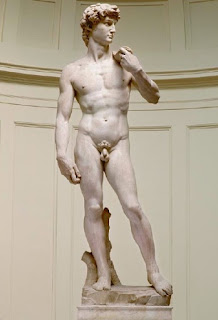Monday, July 11th, 2011
Kauffmann and Female Empowerment
This afternoon I’ve been thinking about Angelica Kauffmann’s painting, Self-Portrait Hesitating between the Arts of Music and Painting (1791, shown left). I can relate to this painting quite well: during my first year and a half as an undergraduate, I couldn’t decide whether to major in music or art history. I play the piano and studied classical voice for several years. At the beginning of college I continually felt compelled to study vocal performance, music education or choral conducting. In some ways, I still wish that I had kept up with my classical singing, especially when I listen to singers like Renée Fleming or Patricia Petibon (the latter is a recent discovery – she’s fantastic!).
In the end, though, I decided to major in art history and minor in music. With only a minor in music, I felt like I could still learn and refine my singing skills but remain somewhat distant from the discipline. I’ve found that my enjoyment of music lessens if I focus on theory and technique too much; I end up overanalyzing musical scores and critiquing performances instead of just listening. However, my enjoyment and love for art (and art history!) doesn’t ever seem to go away, despite how much I learn or how critically I think. So, in the end, I art history was the best choice for me.
Kauffmann was an accomplished musician; she played the zither and clavichord. She also was said to have an extremely beautiful, agile singing voice. Kauffmann had to choose between music and art as a career, and she depicts this decision in her painting. Obviously, Painting won her over. It appears that Kauffmann’s career choice was influenced (at least in part) by a priest who convinced Kauffmann and her father that an operatic career on the stage would lead to a faithless, debased lifestyle.1 (On a side note, I wonder what Painting is pointing at in the distance, beyond the canvas of Kauffman’s painting. Great heights? Achievement? Music seems much more passive of a figure, being seated on the left.)
Not only do I love this painting because I relate to Kauffmann’s interest in music and art, but I also love the idea behind the painting’s composition. Here, Kauffmann is shown in an empowering position between the two arts: she has the ability to choose either career path. Instead of the many depictions in art that show women in helpless or subordinate positions, Kauffmann advertises “publicly her ability as an individual to choose.”2 Another painting by Kauffmann also hints at this same topic of  female choice and empowerment: Venus Induces Helen to Fall in Love with Paris (1790, shown right) shows Helen contemplating the decision to fall in love. For Helen, love seems to be a conscientious choice and she has the ability to make that choice. What a dramatic departure this is from depictions of swooning women in art (see here and here and here), who are rendered as helpless subjects!
female choice and empowerment: Venus Induces Helen to Fall in Love with Paris (1790, shown right) shows Helen contemplating the decision to fall in love. For Helen, love seems to be a conscientious choice and she has the ability to make that choice. What a dramatic departure this is from depictions of swooning women in art (see here and here and here), who are rendered as helpless subjects!
Do you know of other examples in art where a female figure is represented with agency or ability to choose? Or, do you know of any other examples of swooning and/or helpless women?
1 Frances A. Gerard, Angelica Kauffmann: A Biography (London: Ward and Downey, 1893), 18-21. Available online here. Gerard relates that a handsome, promising (male) musician was one of the individuals who actively tried to convince Kauffmann to study music. It is related that Kauffmann’s depiction of Orpheus in Orpheus Leading Eurydice out of Hades (located in a private collection) is a portrait of the handsome musician.
2 David G. Wilkins, Bernard Schultz, Katheryn M. Linduff, Art Past Art Present, 6th edition, (Upper Saddle River, New Jersey: Prentice Hall, 2009), 406.
